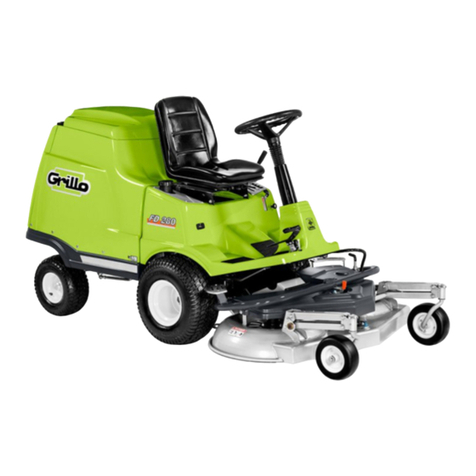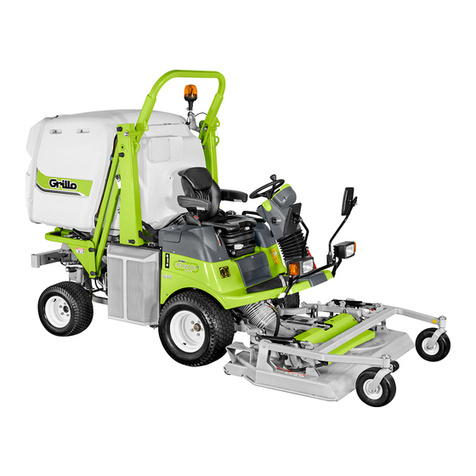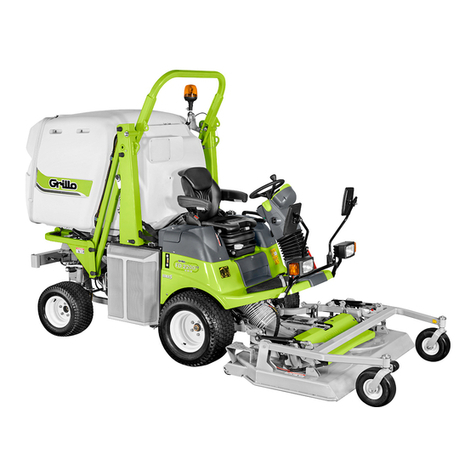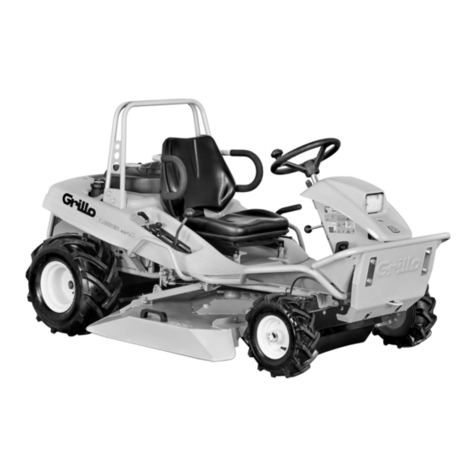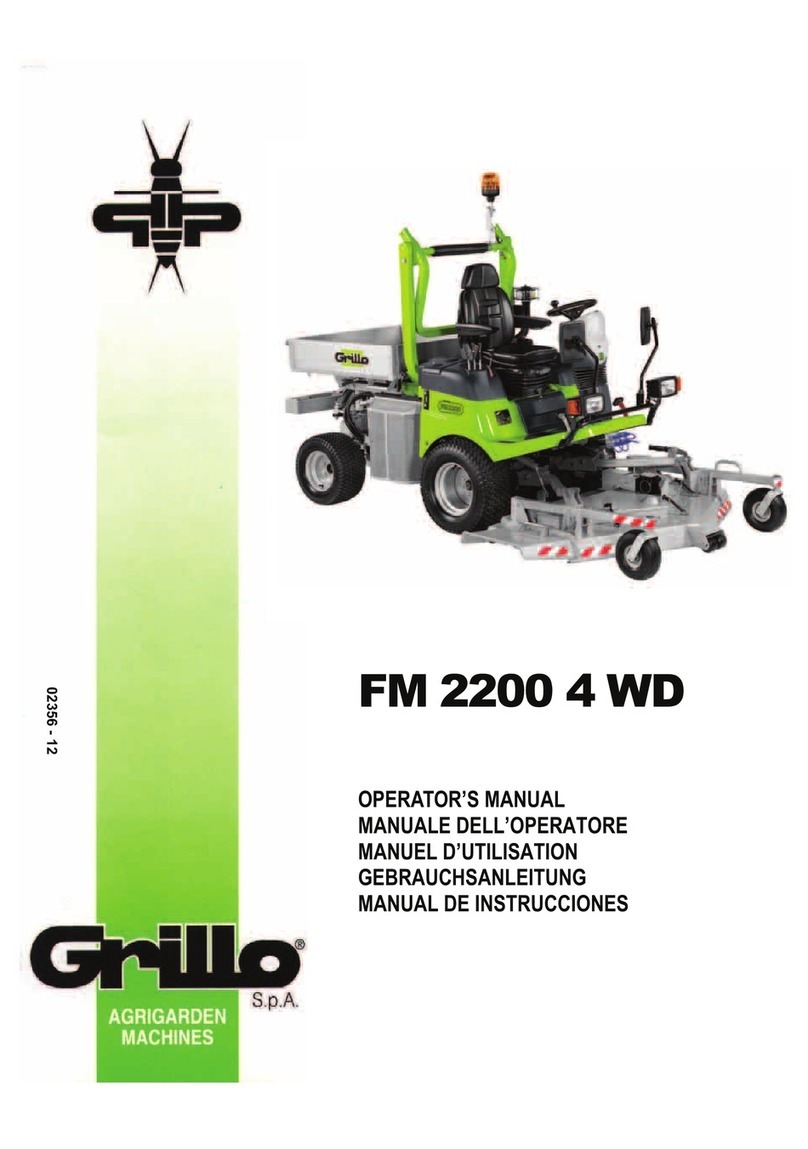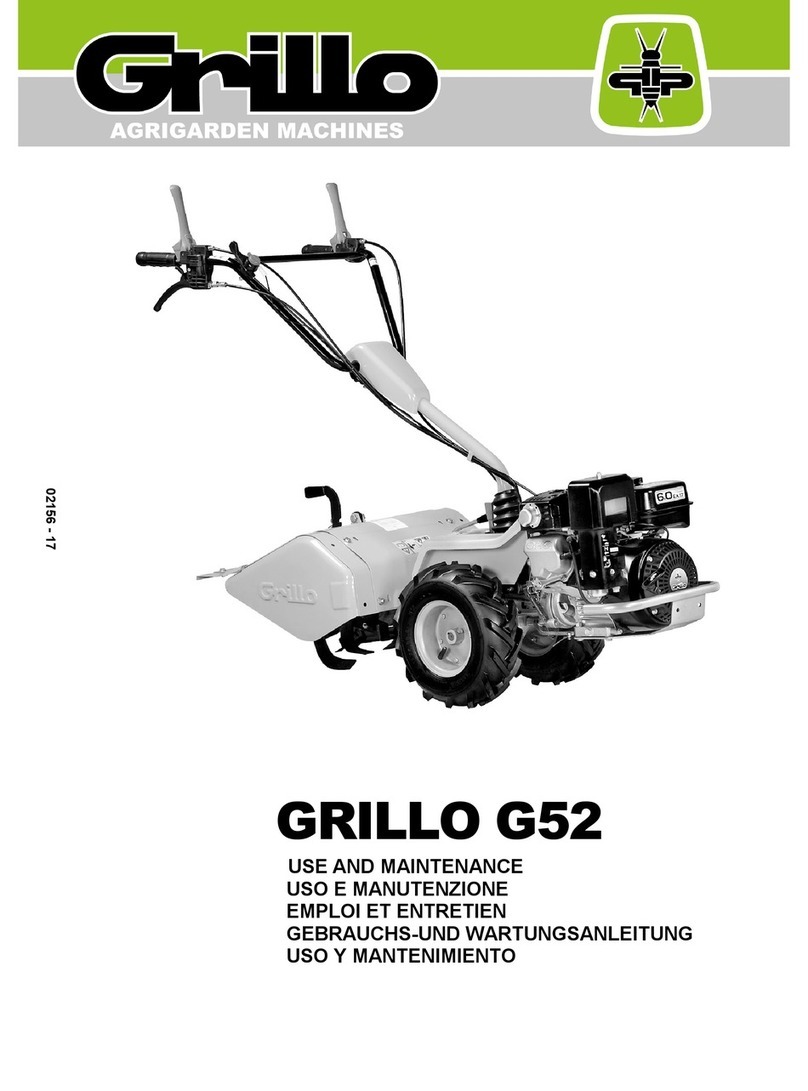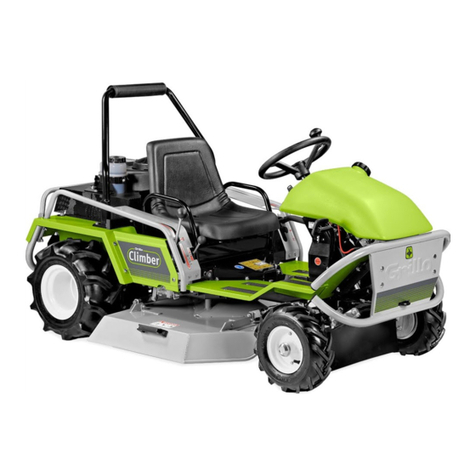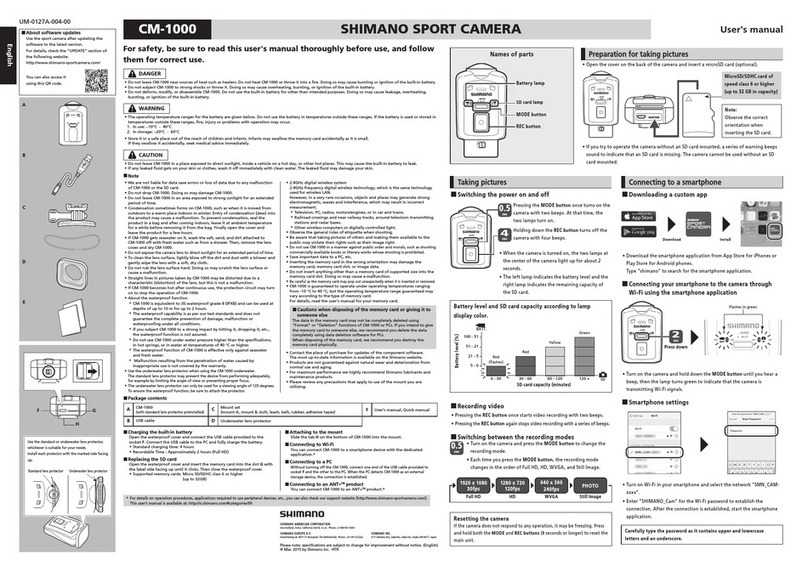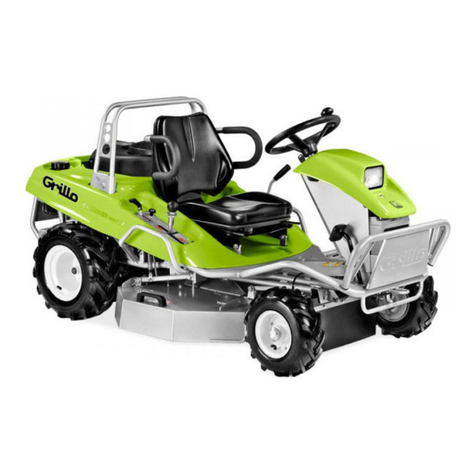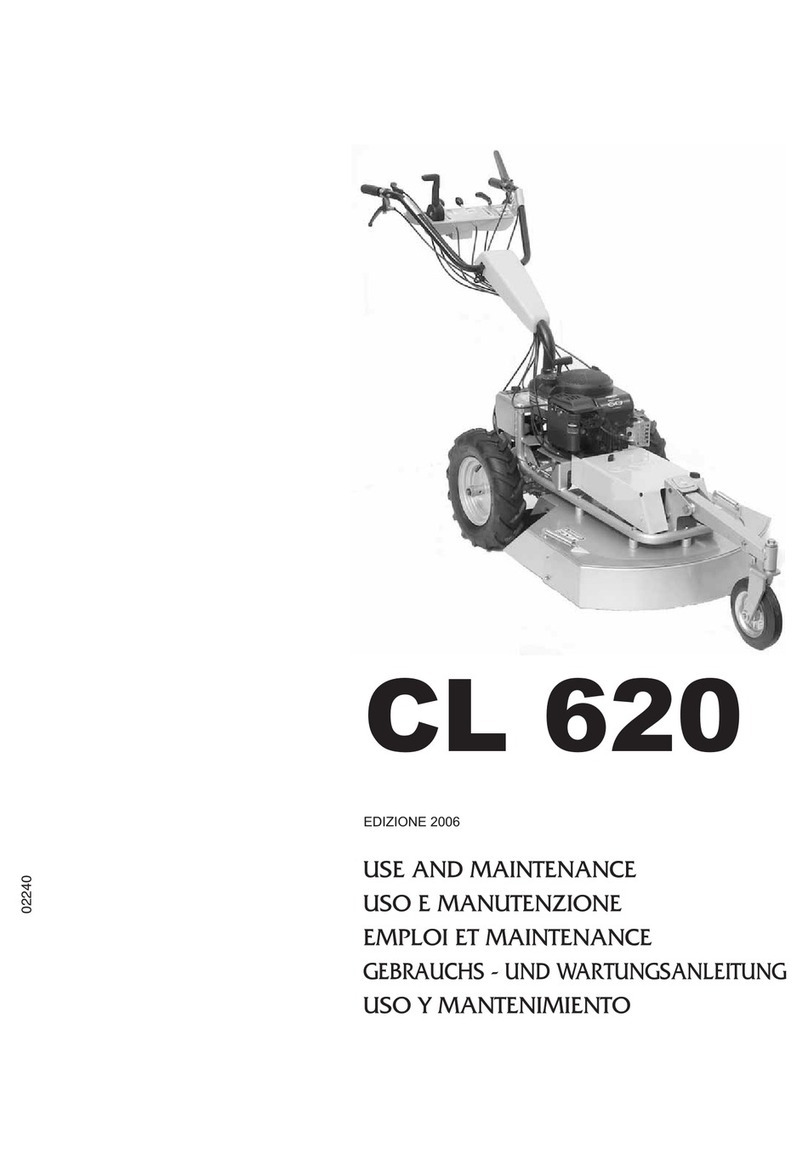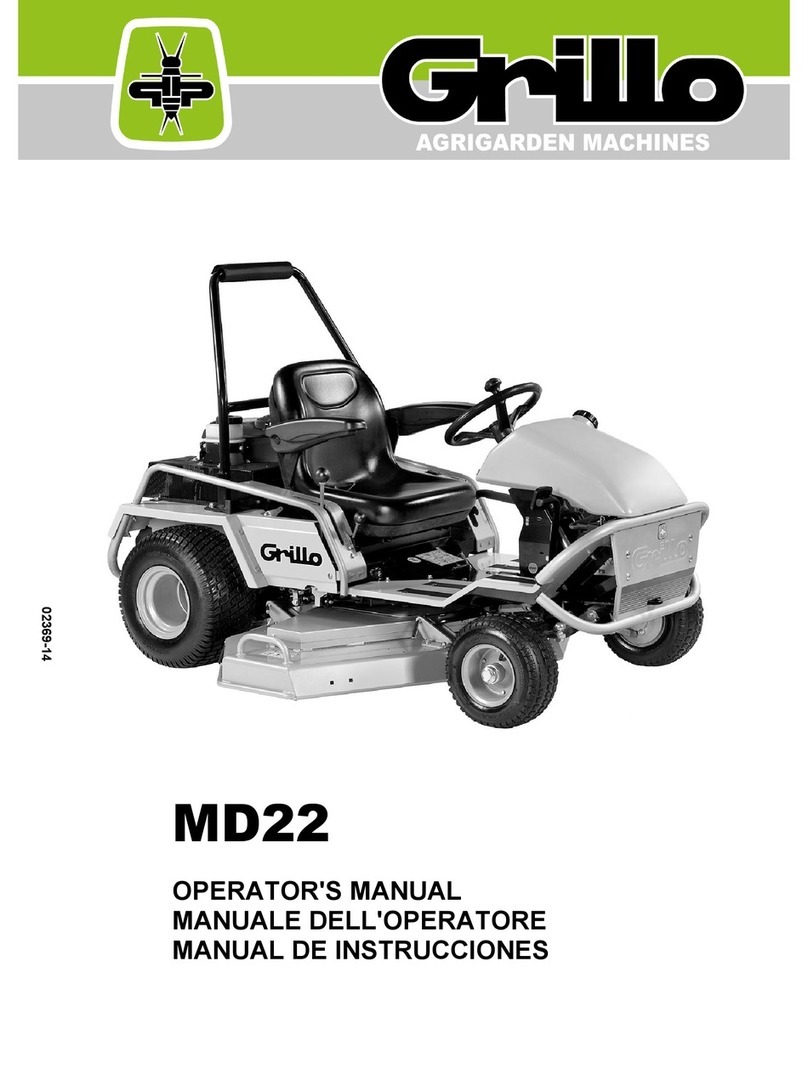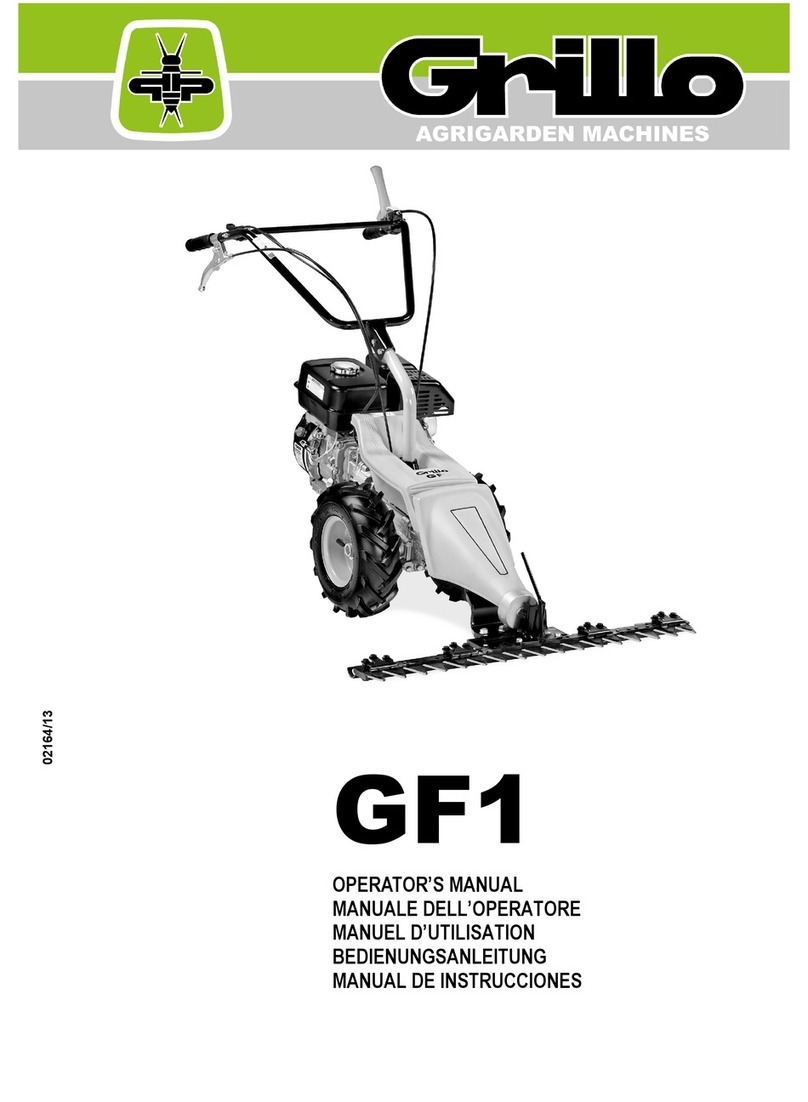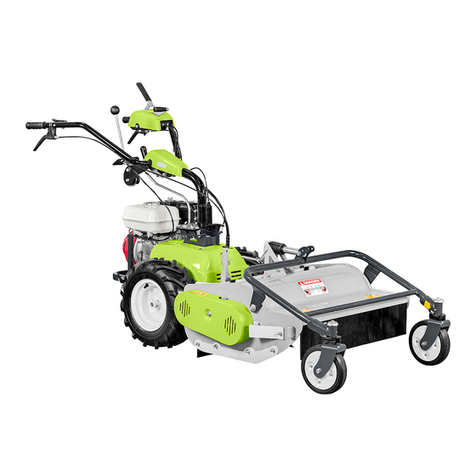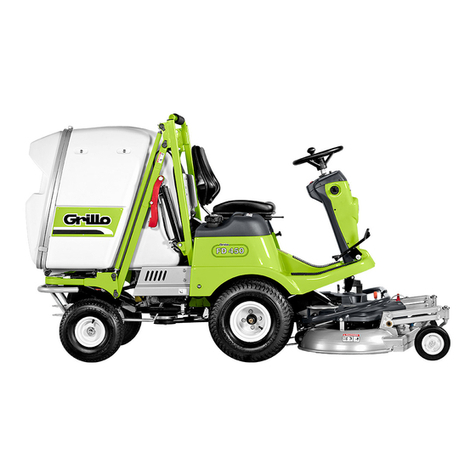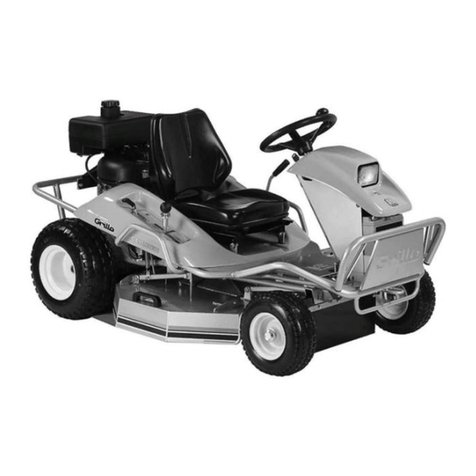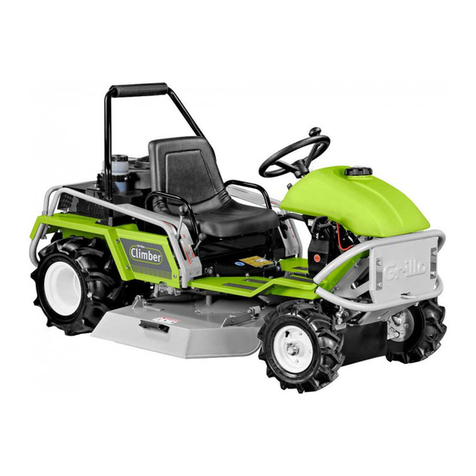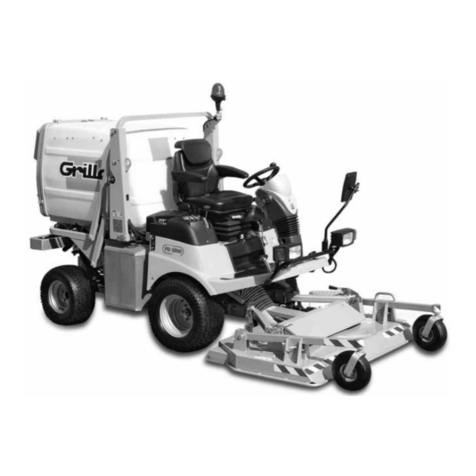Take special care not to touch hot parts of the engine.
Prestate particolare attenzione a non entrare in contatto con parti surriscaldate del motore.
Veiller tout particulièrement à ne pas toucher des éléments surchauffés du moteur.
Achtung – keine heißen Motorteile berühren!
No tocar partes recalentadas del motor.
Tome muito cuidado para não entrar em contacto com as partes aquecidas do motor.
Engine exhaust fumes can cause sickness or death. If it is necessary to run an engine in an enclosed area
use an exhaust pipe extension to remove the fumes. Always try to work in a well ventilated area.
I gas di scarico possono causare malanni o morte. e è necessario mettere in moto un motore in uno
spazio chiuso, usare una prolunga tubo di scarico per far uscire il fumo. Lavorare in una zona ben
ventilata.
L’exhalation des gaz d’échappement peut être cause d’intoxication ou de mort. S’il est vraiment nécessaire
d’allumer le moteur à l’interieur appliquer au tuyau d’échappement un autre tuyau extensible pour
permettre la sortie des gaz. Il est toujours mieux de travailler en plein air.
Auspuffgase können Übelkeit oder Tod verursachen. Wenn es notwendig ist, einen Motor in einem
geschlossenen Raum laufen zu lassen, benützen ie eine Verlängerung, um das Auspuffgas abzuleiten.
Versuchen ie immer in einem gut belüfteten Raum zu arbeiten.
Los gases de escape pueden provocar enfermedades o muerte. De tener que poner en marcha un motor
en un espacio cerrado usar una prolongación del tubo de escape para que salga el humo. Trabajar en
una zona bien ventilada.
Os gases de escape podem causar danos ou morte. Caso seja ncessário fazer com que o motor funcione
num espaço fechado, utilize uma extensão para o tubo de escape que os fumos sejam espulso para o
exterior. Trabalhe numa área bem ventilada.
Caution! Never touch moving pulleys or belts. They can be very dangerous. Never do maintenance with
engine running.
Attenzione! Non toccare mai pulegge o cinghie in movimento, creano gravi danni alla persona. Non fare
manutenzione col motore in moto.
Attention! Ne jamais toucher ni poulies ni courroies en mouvement elles peuvent provoquer des accidents
aux personnes. Ne pas faire l’entretien quand le moteur est en marche.
Vorsicht! Nie laufende Riemenscheiben oder Treibriemen anfassen, da es gefährlich ist. Nie bei laufendem
Motor Instandhaltung machen.
¡Atención! No tocar jamás poleas o correas en movimiento porque pueden crear graves daños a la
persona. No efectuar el mantenimiento con el motor en marcha.
Atenção! Nunca toque nas polias ou correias em movimento devido ao alto risco de ferimentos. Nunca
faça a manutenção da máquina com o motor ligado.
A burst which separates the tyre from the rim parts can cause serious injury or death.
La separazione fra pneumatico e cerchione, causata dall’esplosione del pneumatico, può provocare serie
ferite o addirittura la morte.
La séparation entre le pneu et la jante provoquée par l’explosion d’une roue peut causer des dommages
blessures ou la mort.
Die Trennung der Räder von den Felgen durch Explosion kann schwere Verletzungen oder den Tod
verursachen.
La separación entre el neumático y la llanta producida por la explosión del neumático puede provocar
graves herida e incluso la muerte.
A separação entre o pneumático e o aro, provocada pela explosão do pneumático, pode causar graves
ferimentos ou até mesmo a morte.
Handle fuel with care it is highly flammable: Do not refuel machine while smoking when machine is near
an open flame or sparks or when the engine is running. Stop the engine.
Maneggiare il carburante con cura, è altamente infiammabile; non fate rifornimento mentre fumate, o vicino
a fiamme o scintille, o quando il motore è acceso.
Manier avec soin le carburant car c’est très inflammable. Ne pas remplir le réservoir si vous êtes en train
de fumer ou pendant que la machine est près du feu ou d’étincelles ou encore pendant que la machine
travaille. Arrêter le moteur.
Treibstoff vorsichtig handhaben, da er sehr entzündbar ist: beim Tanken nicht rauchen. Nicht tanken,
wenn die Maschine in der Nähe von Flammen oder Funken ist oder wenn der Motor läuft. Immer den
Motor abschalten.
Manejar el combustible con cuidado porque es sumamente inflamable; no repostar mientras se fuma o
cerca de llamas o chispas o cuando el motor está encendido.
Manuseie o carburante com cuidado, pois este è altamente inflamável; não fume durante o abastecimento
da máquina ou enquanto o motor estiver ligado, não o aproximado de chiama ou de faíscas.
